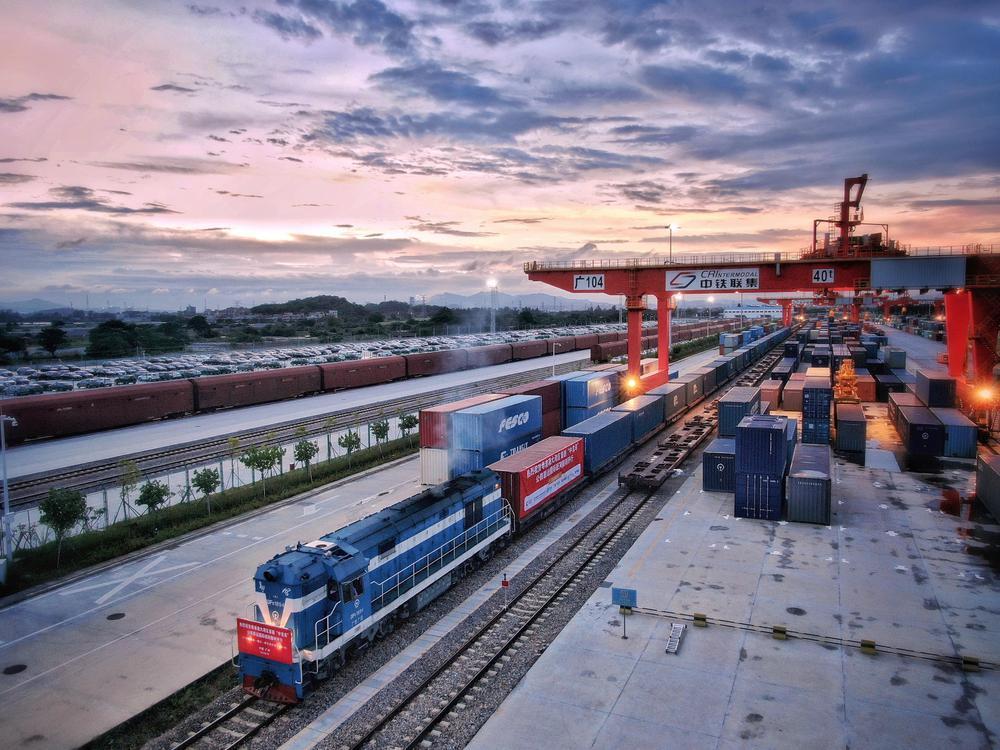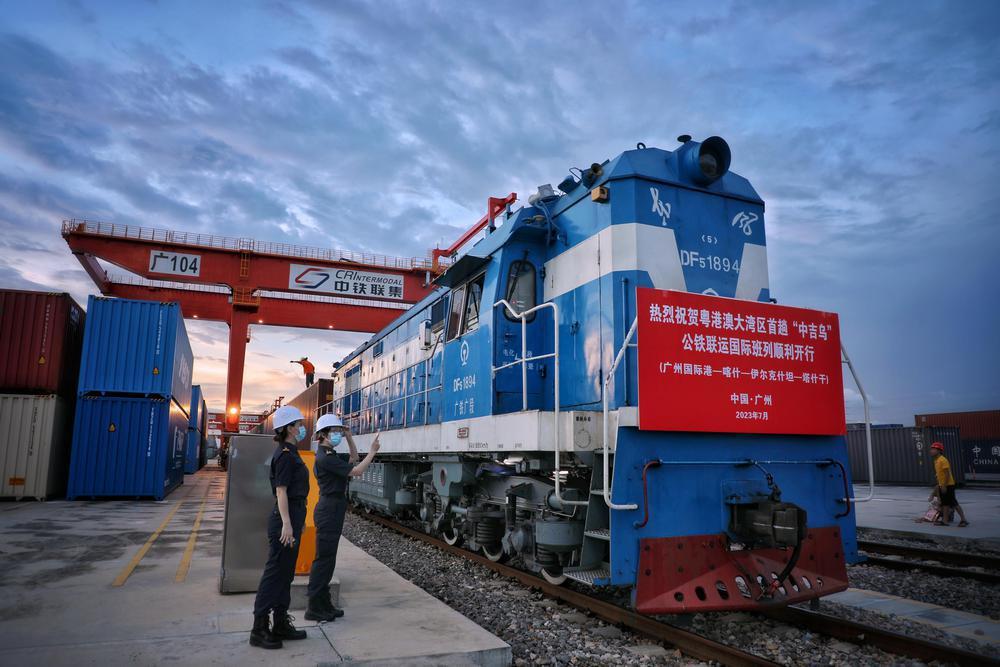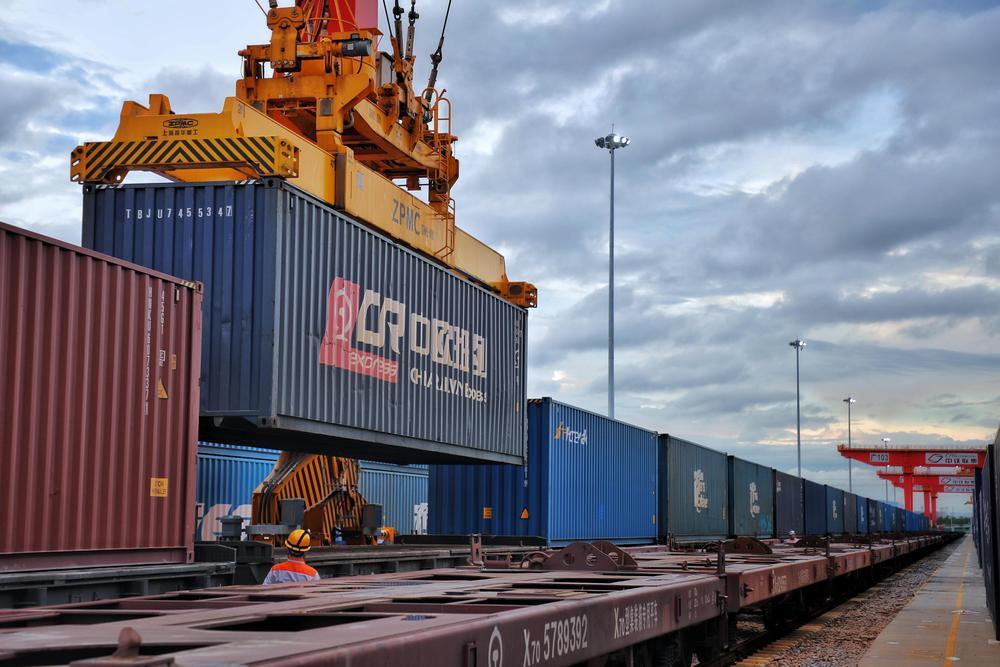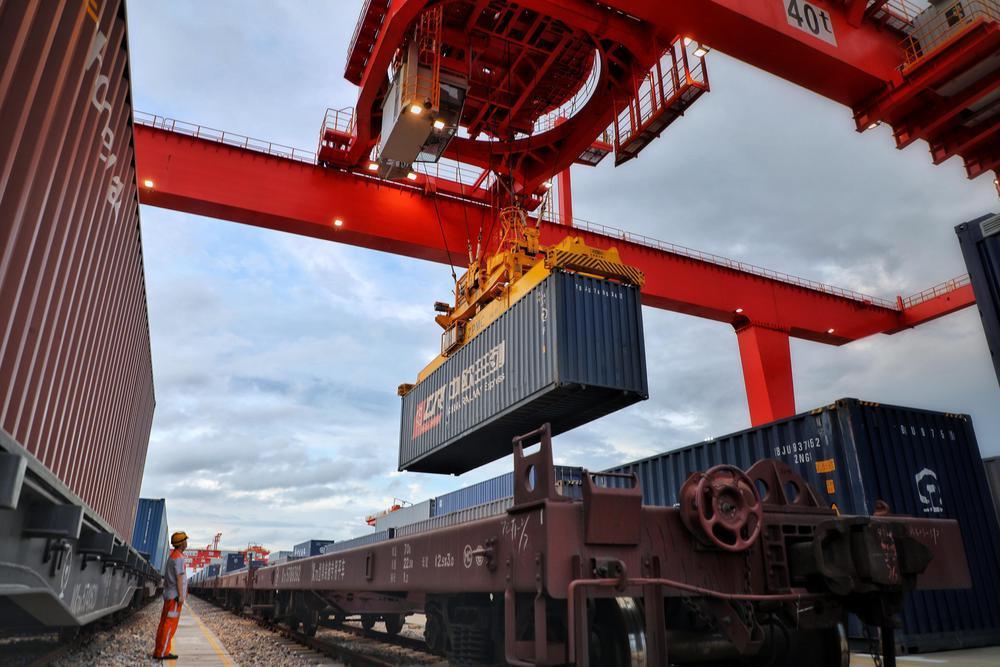Filled with office furniture, air conditioners and small household appliances, the Guangdong-Hong Kong-Macao Greater Bay Area's first China-Kyrgyzstan-Uzbekistan international multimodal cargo train departed from Port of Guangzhou on July 4.

According to reports, the train was organized and operated by Guangdong GW Holdings Group Co., Ltd. and other enterprises. The entire process adopted the international multimodal transportation of containers by railway and road. The train starts from the Greater Bay Area and arrives in Kashi (a city in the west of Xinjiang Province, China). Then the goods are transferred by road through the port of Erkeshtam and cross Kyrgyzstan, which finally arrive in Tashkent, Uzbekistan. Compared with the traditional transportation mode, this multimodal transportation can save about five days.

In order to ensure the successful operation of the train, the Guangzhou Customs of the stations strengthened their communication with the port customs for smooth customs clearance. What's more, a "green channel" was set up to provide convenience for the logistics channel of the train.
According to the data, the accumulated volume of China-Europe Railway Express operated by Guangdong GW Holdings Group has achieved the milestone of 1,000 trains with routes covering more than 30 countries and regions in the Belt and Road Initiative. The Express provides export services for thousands of foreign trade companies and has become an essential logistics artery linking the Greater Bay Area and the world.

The trade between China and the Five Central Asian Countries in 2022 reached a record high of $7.02 billion, an increase of about 100 times compared with the time when China established diplomatic relations with the five counties. Previously, most of China's trade transport to countries in Central Asia left the country via the Horgos port in Xinjiang via China-Europe Railway Express.
However, with the surge in trade volume, congestion at the Horgos port has intensified, and there is an urgent need to open up a new transportation channel to accelerate the flow of goods.

The opening of the GBA's China-Kyrgyzstan-Uzbekistan international multimodal cargo train not only strengthens the economic and trade exchanges between the core areas of the Silk Road Economic Belt and the Guangdong-Hong Kong-Macao Greater Bay Area, but also works as a pioneer for the upcoming the China-Tajikistan-Uzbekistan railway operation project, opening up another new trade channel to the world for China.
大湾区首列“中吉乌”公铁联运国际班列发车
7月4日,粤港澳大湾区首列“中吉乌”公铁联运国际班列满载着办公家具、空调、小家电等粤港澳大湾区名优特色产品,从广州国际港发车。
据介绍,该班列由广物控股集团等企业组织运营,全程采用集装箱“铁路-公路”的国际多式联运方式,以铁路运输方式运抵新疆喀什后,再转公路从伊尔克什坦口岸出境,经吉尔吉斯斯坦,最终运抵乌兹别克斯坦塔什干。该班列相较传统线路可节省5天左右时间。
为保障班列成功开行,广州海关所属车站海关加强与口岸海关沟通,保障通关顺畅;设置“绿色通道”,为班列货物提供便捷物流通道。
数据显示,由广物运营的中欧班列累计开行量已经突破1000列大关,线路覆盖“一带一路”沿线30多个国家和地区,为上万家外贸企业提供外贸出口服务,已成为大湾区链接世界的重要物流大动脉。
2022年,中国与中亚五国贸易额达702亿美元,创历史新高,比建交时增长约100倍。此前,我国至中亚各国的贸易运输大多通过中欧班列经霍尔果斯口岸出境。
随着贸易量的猛增,口岸拥堵加剧,急需开辟一条全新运输通道加速货物流转。
“大湾区—中吉乌”公铁联运班列的开行,不仅密切了丝绸之路经济带核心区和粤港澳大湾区经贸往来,还为即将开通的中吉乌铁路运营项目打好基础,开辟了又一条走向世界的贸易新通道。
文 | 羊城晚报全媒体记者 黄婷
图 | 谭札烽
译 | 白心怡









